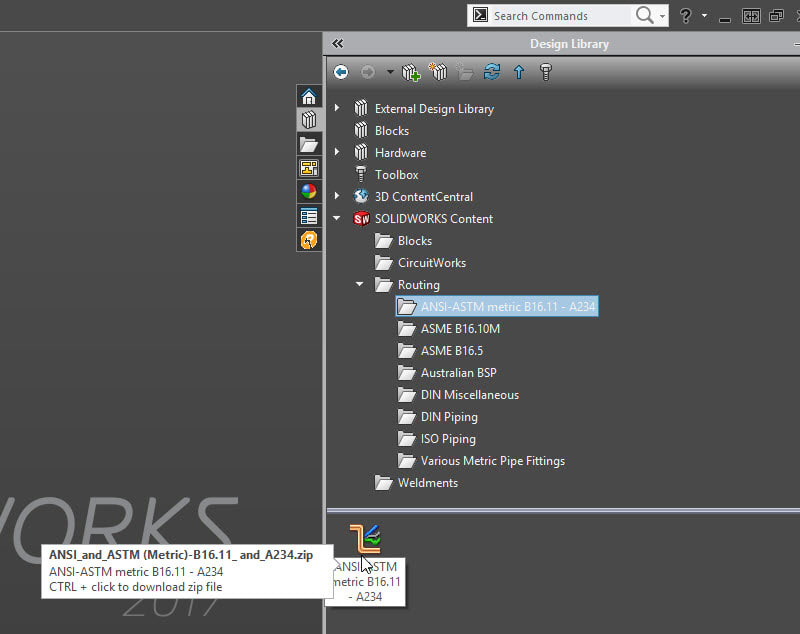
- #SOLIDWORKS BLOCKS LIBRARY HOW TO#
- #SOLIDWORKS BLOCKS LIBRARY PROFESSIONAL#
- #SOLIDWORKS BLOCKS LIBRARY FREE#
Since this part is sacrificial just to create this block I will skip that step.
#SOLIDWORKS BLOCKS LIBRARY FREE#
This means the block will be free to move around unless you add additional dimensions or constraints. When a block is created, all of the dimensions for any of the forming entities become internal to the block. (Grey by default) You will also notice that under your sketch in the tree, the block is added as an absorbed item and given the next available block number in that part and an instance number. Once your block is created, it will turn to the color specified in your System Options under Colors > Sketch, Inactive.

You can then drag the Insertion Point to the spot you would like to use. To add the Insertion Point, simply expand the menu item, this will make the insertion origin show in the graphics area. The insertion point is also where scaling and rotation will be about. Any time the block is used, the insertion point will be the tip of your cursor when placing the block. I also want to specify an Insertion Point so that any time I use this block I can better control where it goes. That is all that is required to create the block, however we are going to go one step further. The Make Block command is simple first specify which entities are supposed to be part of the block. Now I can turn my group of various sketch entities into a single block by selecting the Make Block command from the Block toolbar. I do that by right clicking on the Command Manager and clicking on the Blocks option. In order to access the block options, I am going to turn on my block toolbar. Here I have a sketch of the Hawk Ridge Systems logo which I modified slightly. To make a block from scratch, you first need a sketch that you would like to turn into the block. However, blocks still have a place in the 3D world, and you can make and use them easily with SOLIDWORKS. Ever since I made the jump to SOLIDWORKS, my need for blocks has been almost entirely replaced by simply reusing 3D models, like those from the Toolbox. Sound familiar? I am talking about Blocks, a saved set of entities that you can reuse whenever needed.

Rather than drawing a new hexagon every time I needed a bolt, I saved the first one I drew and reused that time and time again. He is a regular contributor to the Fisher/Unitech blog.In the first CAD tool I learned to use, it was almost every day that I would reuse sets of shapes repetitively to represent common items such as hardware.
#SOLIDWORKS BLOCKS LIBRARY PROFESSIONAL#
Want to learn more about the different features available in SolidWorks Standard, Professional and Premium? Visit the product matrix on .īrian VanderPloeg is an Applications Engineer at Fisher/Unitech, a SolidWorks Value Added Reseller with locations across the MidwesternĪnd Northeastern United States. Obviously there is a little more involved within the four steps, so go through the above video for a more detailed explanation and start creating your own library features to “die” for.
#SOLIDWORKS BLOCKS LIBRARY HOW TO#
In the previous piece, I didn’t go in great detail about how to create a library feature from start to finish, so I wanted to spend the time to go into this process a bit more.

I know this may sound like a repeat from my previous entry Including Reference Axes in Library Features, but it seems like I have been getting tons of questions lately about how to create Library Features.


 0 kommentar(er)
0 kommentar(er)
